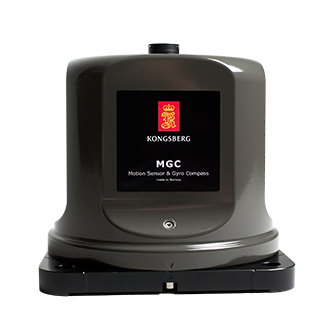How jamming and spoofing threaten safe navigation
Jamming disrupts GNSS signals, limiting access to satellite-based positioning. This can leave vessels without accurate speed or location data, posing serious operational and safety risks – especially in busy shipping lanes, poor visibility conditions or unfamiliar waters.
Spoofing, on the other hand, is more insidious. By mimicking legitimate GNSS signals, attackers can trick navigation systems into misreporting the vessel’s position. Without a trusted back-up system, a ship could be unknowingly diverted off-course, putting it at risk of grounding, collision or entering restricted waters.
Although traditional gyrocompasses are immune to these signal-based attacks by design, many modern navigation systems incorporate GNSS data to enhance positioning accuracy. This creates vulnerabilities – unless paired with intelligent systems like the MGC.
GNSS independence is crucial
The rising number of GNSS spoofing and jamming incidents has highlighted the critical need for navigation systems that can function without satellite input. For maritime operators, having an autonomous and reliable source of heading and positioning data is essential to ensure safety and maintain operational continuity in contested or signal-denied environments.
Kongsberg’s MGCs offer this resilience, using high-grade strap-down inertial sensors that detect the Earth’s rotation without the need of external input. This allows them to determine true north and maintain precise heading without relying on GNSS. Unlike traditional mechanical gyros, Kongsberg’s MGCs can estimate latitude internally. This ensures consistent accuracy from equatorial regions to the poles.
The system also supports Doppler-based seabed and water-column tracking to determine vessel velocity, eliminating the need for satellite-derived speed data.
Resilient navigation
Kongsberg’s MGCs provide resilient navigation with advanced inertial technology and motion reference capabilities that enable:
- Continuous latitude estimation from Earth’s rotation measurements
- Accurate heading, roll, pitch and heave without GNSS
- Versatile support for velocity tracking and input
This robust combination ensures that even when GNSS signals are lost or manipulated by spoofing or jamming, the MGC continues to operate with high precision – offering a resilient navigation backbone when it's most needed.
Proven reliability without maintenance overhead
Reliability isn’t just about surviving attacks – it’s also about long-term performance in demanding environments. Kongsberg’s MGCs are designed to be maintenance-free, eliminating the need for frequent calibration or mechanical upkeep. Further key features include:
- IMO type-approved: Fully compliant with global navigation standards
- Maintenance-free design: No spinning parts and no mechanical drift
- Versatile integration: Can be used standalone or seamlessly incorporated into an INS (inertial navigation system)
Together with their proven GNSS independence, these attributes make the MGCs ideal for all types of commercial and passenger vessels, offshore platforms and naval ships operating in challenging environments.
Robust defence in an uncertain world
Jamming and spoofing are no longer theoretical threats but active challenges. Kongsberg’s MGCs offer a proven, practical solution for ensuring navigational safety in challenging environments from remote polar waters, high-conflict zones or busy shipping corridors. For any organisation seeking navigation systems where resilience and reliability are paramount, the choice is clear.

